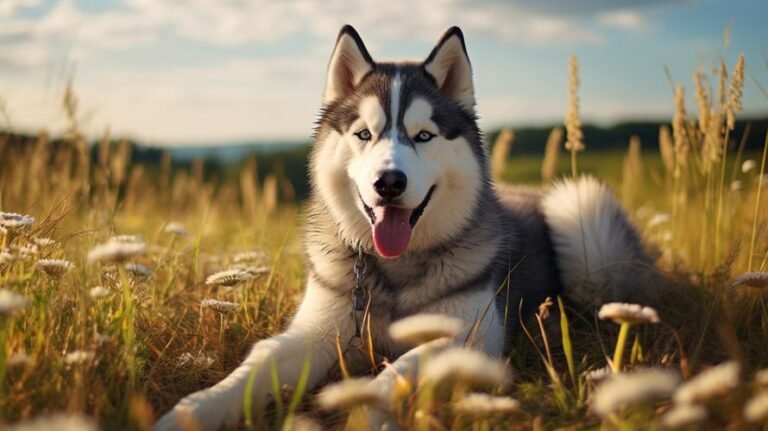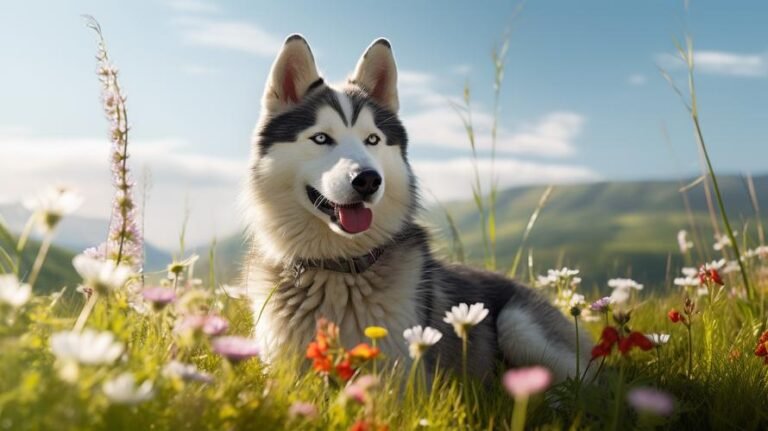Let me tell you something fascinating that you probably never knew about the furry balls of energy known as Siberian Huskies. These fun-loving dogs are actually closely related to wolves! That’s right, your favorite four-legged friend shares DNA with the wild and majestic Grey Wolf. But don’t worry, while they may have some similar characteristics, Siberian Huskies are well-adapted to being domesticated and make fantastic family pets. These energetic dogs are known for their fast-paced approach to life, their brilliant blue or multi-colored eyes, and their lush coats. But that thick, beautiful coat brings us to a question that many potentially new Husky parents often find themselves asking: Does a Siberian Husky shed a lot?
Well, to put it succinctly, yes! Siberian Huskies are indeed heavy shedders. But don’t fret just yet. This doesn’t necessarily have to be a messy problem. With the right knowledge and tools, you can keep your home hair-free, your dog comfortable, and your sanity intact. Intrigued? Let’s dive deeper and explore why these friendly fur-babies shed so much and what you can do to manage it effectively!
You see, Siberian Huskies hail from the chilly climates of Northeast Asia, where they were originally used as sled dogs by the Chukchi tribe in Siberia, Russia. Hence, it’s no surprise that they’ve developed a beautifully dense double coat to keep them warm and cozy. This double-layered armor consists of a soft, thick undercoat and a top layer of longer, protective hairs known as guard hairs.
Fun fact: Did you know that the color of a Siberian Husky’s coat can vary and includes combinations of black, white, red, sable, gray, and even the rare agouti, which gives them a wild, wolf-like appearance?
Now, why do Siberian Huskies shed so heavily? It’s all about adaptation. Being native to extremely cold weather, Huskies have developed a physiological way to adapt to seasonal changes. This process is coined “blowing their coat.”
“Blowing their coat,” sounds pretty dramatic right? It is a two-time-a-year event, usually triggered by changes in daylight hours, where Huskies shed their undercoat completely. This happens once in the spring to eliminate the heavy winter fur and once in the fall to prepare for the new, warmer winter fur. During these periods, don’t be surprised to find large clumps of your Husky’s fur around your home. It may look like there’s an indoor snowstorm!
Remember when we said there’s a way to manage this? Here are some practical tips to keep all that doggie fluff under control.
Firstly, frequent grooming is the key to managing your Husky’s shedding. Brushing your dog regularly – about once every day or every other day during shedding season – will ensure that most of the loose fur ends up in your brush and not on your furniture. Invest in a quality undercoat rake or a deshedding tool for the best results. And remember, while general grooming can be done at home, don’t be afraid to schedule regular appointments with a professional groomer.
Secondly, providing a diet rich in omega-3 and omega-6 fatty acids plays a significant role in maintaining your Husky’s coat health, resulting in less shedding. You can find these fatty acids in supplements or various types of fish like salmon or tuna.
And finally, always remember that shedding is a natural and healthy process for Siberian Huskies. It’s their body’s way of adapting to changes in weather and keeping their skin healthy. So, while it may feel like your Husky is shedding enough fur to create a mini husky, don’t worry! With the right management, you’ll hardly notice.
So, when you see that cloud of fur floating around your home or have a Husky-shaped outline on your couch, remember – it’s all just a part of the Husky owning experience. And let’s be honest, it’s a small price to pay for the affection of a loving, energetic, and fantastically loyal furry friend!
In conclusion, while Siberian Huskies may decorate your home with their tufts of fur quite lavishly, it’s truly not an overwhelming challenge to manage. Regular grooming, a healthy diet, and an understanding of your furry friend’s genetic makeup go a long way in happily sharing your home with these beautiful, exuberant, and ever-loving companions.



